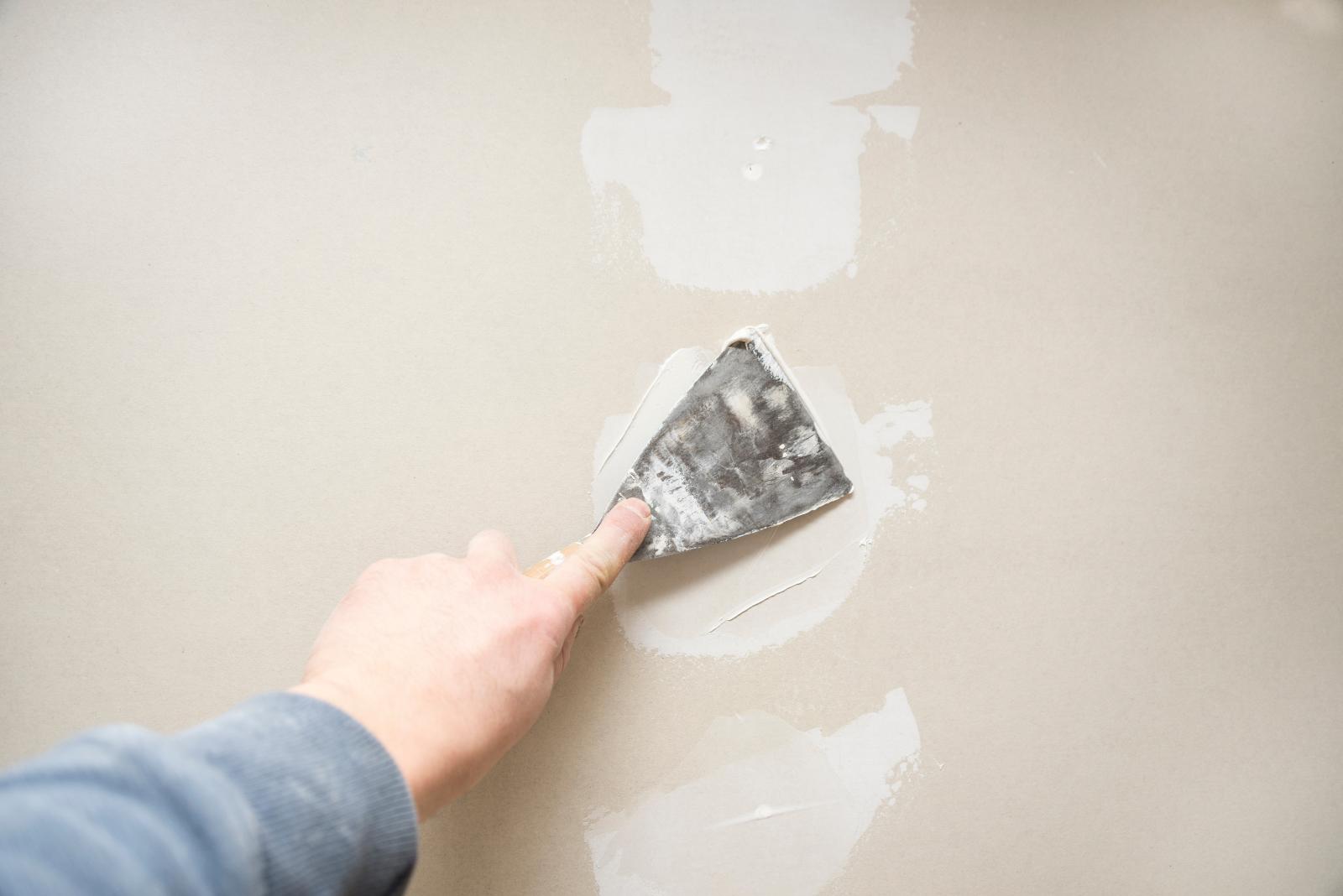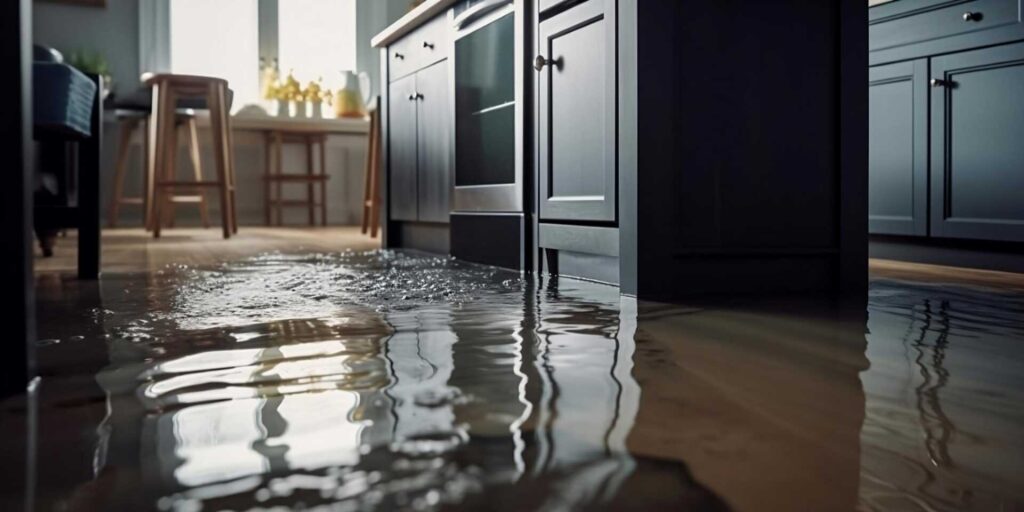Contents
You’re tired of dealing with unsightly drywall holes that seem to appear out of nowhere. What if there were simple ways to prevent them in the first place? By following these ten best tips, you can save yourself the frustration and hassle of patching up holes time and time again. From basic wall inspections to strategic furniture placement, these tips will help you maintain pristine walls for the long haul.
Key Takeaways
- Regularly inspect walls for early detection of potential holes.
- Use proper anchors based on weight and installation technique.
- Be cautious with furniture placement to avoid wall damage.
- Apply protective corner guards in high-traffic areas.
- Choose durable wall materials like fiberglass-faced gypsum board.
Inspect Walls Regularly
Regularly inspecting your walls is crucial for detecting potential drywall holes early on. By incorporating wall inspections into your regular maintenance routine, you can catch any issues before they escalate into larger problems.
Start by visually examining your walls for any signs of damage, such as cracks, dents, or peeling paint. These could be indicators of underlying issues that may lead to holes in the drywall if left unattended.
During your wall inspections, pay special attention to areas that are more prone to damage, such as corners, around door frames, and near baseboards. These areas are susceptible to impact and wear, making them common spots for drywall holes to form. By focusing on these vulnerable areas during your inspections, you can proactively address any potential issues before they worsen.
In addition to visual inspections, run your hands along the walls to feel for any soft spots or areas that seem uneven. These could be signs of water damage or drywall deterioration, both of which can eventually lead to holes.
Use Proper Anchors
Ensure proper anchoring of items on your walls by selecting the appropriate anchors for the weight and type of object being mounted. Proper anchor selection and installation techniques are essential to make sure your items stay securely in place, preventing unnecessary damage to your drywall. Here’s a detailed guide to help you choose the right anchors for your needs:
| Anchor Type | Weight Capacity | Installation Technique |
|---|---|---|
| Plastic Sleeve | Up to 20 lbs | Drill a hole, insert an anchor, expand by screwing |
| Toggle Bolt | Up to 50 lbs | Drill a larger hole, insert toggle, tighten |
| Expansion Anchor | Up to 75 lbs | Drill a hole, insert a bolt, tighten screw |
| Molly Bolt | Up to 50 lbs | Drill a hole, insert bolt, tighten screw |
| Self-Drilling | Up to 50 lbs | Drill hole with anchor, screw in |
When mounting heavier items, always distribute the weight evenly and consider using multiple anchors for extra support. Additionally, make sure the anchor is flush with the wall to prevent any gaps that could weaken its hold. By following these essential anchor selection and installation techniques, you’ll minimize the risk of future drywall holes and keep your wall fixtures securely in place.
Be Cautious With Furniture Placement
When arranging your furniture, always be cautious of the placement to prevent potential damage to your drywall. Proper furniture arrangement is important for wall protection and maintenance. Consider the weight and size of each piece in relation to the wall it will be against.
Avoid placing heavy furniture directly against the walls, as this can lead to unnecessary strain and potential damage over time. Instead, leave a small gap between the furniture and the wall to prevent any accidental bumps or scrapes that could result in holes.
Furthermore, be mindful of sharp edges or protruding parts on your furniture that could easily puncture or dent the drywall. When positioning items such as tables, seats, or bookshelves, make sure that they’re placed a safe distance away from the walls to minimize the risk of impact.
Additionally, be cautious when moving furniture around to clean or redecorate, as dragging or pushing items can cause friction against the walls, leading to scuffs or holes.
Apply Protective Corner Guards
To effectively prevent future damage to your drywall, consider applying protective corner guards to vulnerable areas in your home. Corner guards act as a shield for your walls, absorbing impact and preventing dents and holes. They’re particularly useful in high-traffic areas or homes with children or pets.
When looking at corner guard alternatives, you have various options to choose from. Plastic corner guards are affordable and easy to install, making them a popular choice for many homeowners. Metal corner guards are more durable and suitable for areas prone to heavier impact. For a more decorative touch, consider decorative corner guards that can blend in with your home’s aesthetic while still providing protection.
If you opt for a DIY corner guard installation, start by measuring the height of your corners and cutting the guards to fit accordingly. Use adhesive or screws to secure them in place, ensuring a snug and secure fit. Install them on all vulnerable corners throughout your home to maximize protection.
Choose Durable Wall Materials
Your choice of wall materials plays an essential role in preventing future drywall holes. Opting for durable wall materials can greatly impact the quality and longevity of your walls.
Consider the importance of material durability in ensuring your walls stay intact and hole-free for years.
Material Durability Importance
Consider opting for durable wall materials to enhance the longevity and resilience of your walls against potential damage. When it comes to material selection, prioritize sturdiness and longevity. Opt for materials like fiberglass-faced gypsum board or cement board, which are more resistant to dents and dings compared to traditional drywall. These materials offer increased durability and are less prone to damage from daily wear and tear.
In addition to material selection, proper maintenance is vital in preventing future drywall holes. Regularly inspect your walls for any signs of damage or wear, such as cracks or bulges, and address them promptly to prevent further issues.
Implementing preventive measures like installing corner guards in high-traffic areas can also help protect your walls from accidental impacts that could lead to holes or dents.
Impact of Wall Quality
Choosing sturdy wall materials, like fiberglass-faced gypsum board or cement board, is essential for improving the longevity and resilience of your walls against potential damage. When considering the impact of wall quality on preventing future drywall holes, focusing on construction quality and maintenance practices is vital.
Here are some key points to keep in mind:
Invest in Quality Materials: Opt for durable wall materials less prone to damage from impacts or moisture.
Regular Maintenance: Conduct routine inspections to identify any signs of wear or damage early on.
Proper Installation: Make sure that walls are correctly installed to minimize the risk of future issues.
Learn Repair Techniques: Familiarize yourself with basic repair techniques to address any minor damages promptly and prevent them from escalating.
Longevity of Wall Choices
Selecting durable wall materials is essential for ensuring the longevity and resilience of your walls against potential damage. When choosing wall materials, consider durability alongside room aesthetics to create a space that looks good and stands the test of time.
To help you make an informed decision, below is a comparison table outlining the durability and maintenance requirements of common wall materials:
| Wall Material | Durability | Maintenance |
|---|---|---|
| Drywall | Moderate | Regular patching |
| Plaster | High | Periodic upkeep |
| Brick | Very High | Minimal care |
| Concrete | Extremely High | Low maintenance |
Educate Household Members
Make sure to communicate with your household members about the importance of treating walls with care.
Educate everyone on the proper ways to hang items without causing damage and encourage responsible use of the walls.
Family Communication
To prevent future drywall holes, make sure all household members are informed about proper wall care and maintenance practices. Effective family communication is essential in maintaining your walls’ integrity. Here are some key tips to facilitate better communication within your household:
Establish Clear Family Rules:
Create specific guidelines regarding wall care, such as rules about hanging items, using adhesives, and avoiding rough play near walls.Promote Open Communication:
Encourage family members to express any concerns they may have about the walls respectfully and openly to prevent potential conflicts.Practice Conflict Resolution:
Teach household members constructive ways to resolve disagreements that may arise concerning wall care to maintain a harmonious environment.Set Boundaries:
Clearly define boundaries around wall-related activities to make sure everyone understands their responsibilities in preserving the walls’ condition.
Responsible Use
Ensure all household members are educated on responsible use practices to minimize the risk of causing damage to the drywall. Implement preventive measures by informing everyone about the weight limits for hanging items. Use DIY solutions such as anchors or braces for heavier objects. It’s essential to follow expert advice on proper installation techniques to avoid unnecessary holes.
Regularly inspect walls for any signs of stress to address issues promptly and prevent further damage. Encourage family members to communicate openly about any concerns regarding the drywall, fostering a sense of shared responsibility.
Maintenance tips include using the correct tools when hanging items and avoiding excessive force. Emphasize the importance of treating the walls with care to maintain their integrity. Educate household members on the impact of careless handling on the longevity of the drywall.
Securely Hang Decorations
When hanging decorations on your drywall, make sure to use appropriate hanging hardware to prevent future holes. It’s crucial to choose the right techniques and tools to hang your decorations securely without damaging your walls.
Here are some practical tips to help you hang decorations safely and effectively:
Utilize Wall Anchors: When hanging heavier decorations or items like shelves, use wall anchors to distribute the weight and prevent unnecessary strain on a single point. Wall anchors provide extra support and help protect your drywall from potential damage.
Consider Decoration Placement: Before hammering any nails or screws into your drywall, carefully plan the placement of your decorations. Avoid hanging items in high-traffic areas where they may be accidentally knocked off or bumped into, causing damage to both the decoration and the wall.
Use Wall Protection: To prevent scratches, scuffs, or marks on your walls from decorations, consider using protective measures such as adhesive wall protectors or felt pads behind frames or other hanging items. These simple additions can make a big difference in preserving the integrity of your drywall.
Follow Hanging Techniques: Whether using nails, screws, hooks, or other hanging hardware, make sure to follow proper hanging techniques to make certain that your decorations are securely attached to the wall. Improperly hung items are more likely to fall, potentially causing damage to the drywall surface.
Avoid Unnecessary Drilling
When avoiding unnecessary drilling in your drywall, it’s important to practice mindful drilling techniques. By strategically placing holes only where necessary, you can prevent creating additional holes that may weaken the structure.
Planning out your drilling approach can save you time and effort in the long run.
Mindful Drilling Practices
To prevent unnecessary damage to your drywall, always carefully plan your drilling locations to avoid creating additional holes. Mindful drilling practices can save you time, effort, and the hassle of repairing avoidable mistakes.
Here are some key tips to help you drill into your drywall more effectively:
Check Drill Depth: Before drilling, make sure you know the thickness of your drywall and set the drill depth accordingly to avoid piercing through the other side.
Use Proper Equipment: Invest in a good quality drill and drill bits suitable for drywall to prevent unnecessary damage and create clean holes.
Mark Your Spot: Use a pencil or painter’s tape to mark the exact spot where you want to drill to ensure accuracy and avoid multiple attempts.
Start Slowly: Begin drilling at a low speed to prevent the bit from slipping and creating additional holes or causing cracks in the drywall.
Strategic Hole Placement
Strategically placing holes in your drywall is essential to avoid unnecessary drilling and maintain the integrity of your walls. When planning where to place holes, consider existing studs and electrical wiring to prevent accidental damage.
Before drilling, use a stud finder to locate studs and mark their positions to guide you. Avoid drilling too close to the corners of the walls, as these areas are more prone to cracking. Additionally, steer clear of areas with high moisture levels, as excessive moisture can weaken the drywall and lead to more frequent hole repair.
Remember that proper hole placement prevents unnecessary damage and contributes to overall wall maintenance. By strategically positioning holes, you minimize the need for frequent repairs, preserving the appearance and strength of your walls.
Taking the time to plan hole placement thoughtfully can save you time and effort in the long run, ensuring that your walls remain in top condition.
Repair Holes Promptly
Promptly addressing any holes in your drywall is crucial to prevent further damage and maintain the integrity of your walls. Neglecting even small holes can lead to more significant issues over time. Here are some practical steps you can take to repair holes promptly:
Assess the Damage: Start by evaluating the size and nature of the hole. Small nail holes may only require spackling, while larger holes might need a patch or professional repair.
Gather Supplies: Make sure you have the necessary tools and materials on hand, such as spackle, putty knife, sandpaper, paint, and a patching kit for more extensive damage.
Patch or Fill the Hole: Apply spackle or use a patching kit to fill the hole. Smooth it out evenly with a putty knife and allow it to dry completely before sanding.
Paint and Blend: Once the repair is dry and sanded, paint over the patched area to match the rest of the wall. Ensure the paint blends seamlessly for a professional finish.
Invest in Professional Installation
For a flawless finish and long-lasting results, considering professional installation for your drywall is a wise investment. While DIY repairs can be satisfying, nothing quite compares to the expertise and precision that professional maintenance offers.
When it comes to drywall installation, the skill and experience of a professional can make all the difference in the durability and appearance of your walls. Professional installers have a keen eye for detail that ensures every seam is perfectly aligned, every corner is sharp, and every nail is securely in place.
Their knowledge of the best materials and techniques for different spaces can save you from future headaches caused by improperly installed drywall. Additionally, professionals have access to specialized tools that make the installation process more efficient and effective, resulting in a smoother finish overall.
Investing in professional installation provides a high-quality outcome and offers peace of mind, knowing that your walls are in the hands of experts. By entrusting your drywall project to professionals, you can enjoy a polished finish that enhances the aesthetics of your space and reduces the likelihood of future repairs.
Recap
Now that you know the top 10 tips to prevent future drywall holes make sure to incorporate these strategies into your maintenance routine.
Regular wall inspections can help identify issues early and prevent costly repairs down the line.
Stay proactive and take care of your walls to avoid any unwanted holes in the future.




